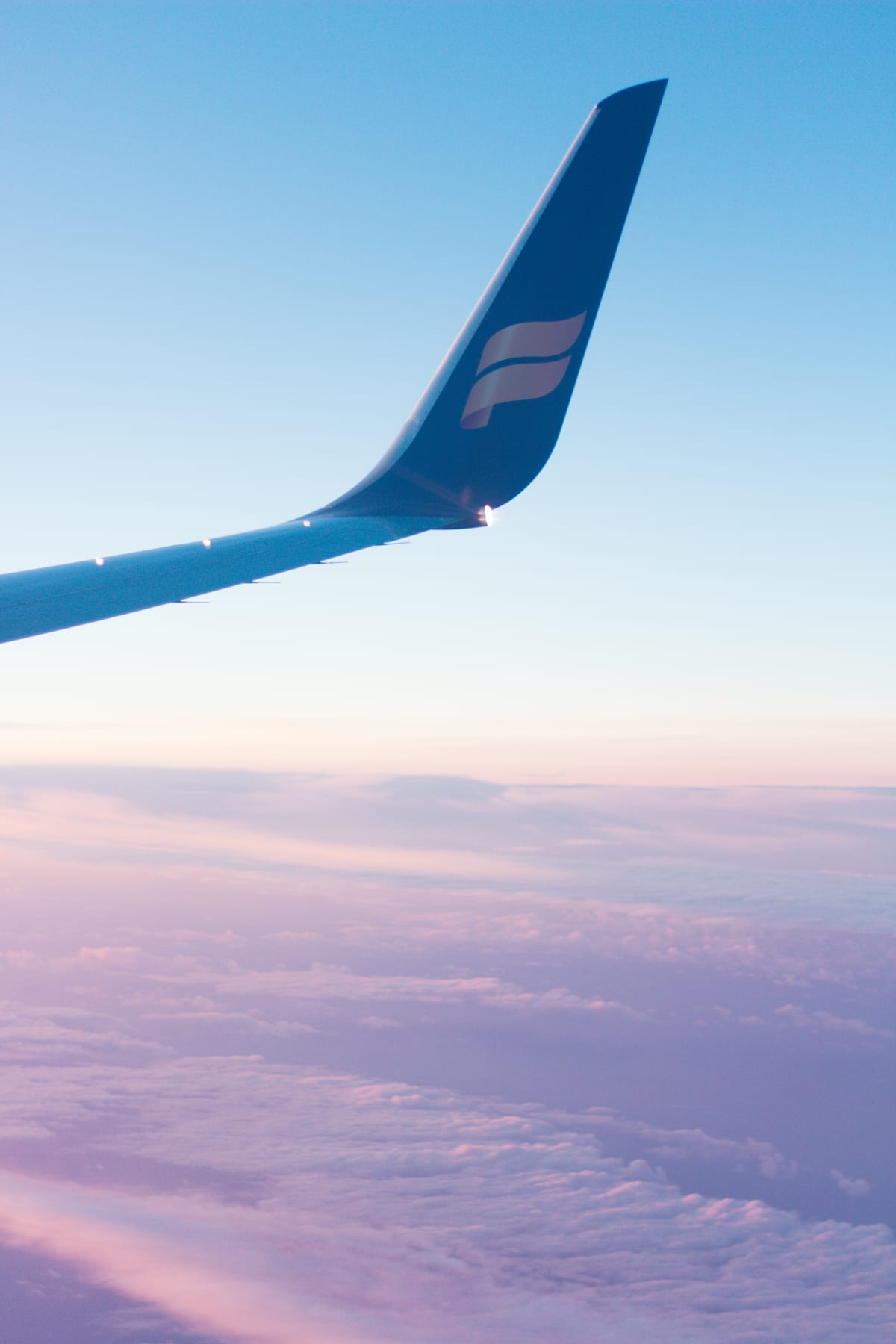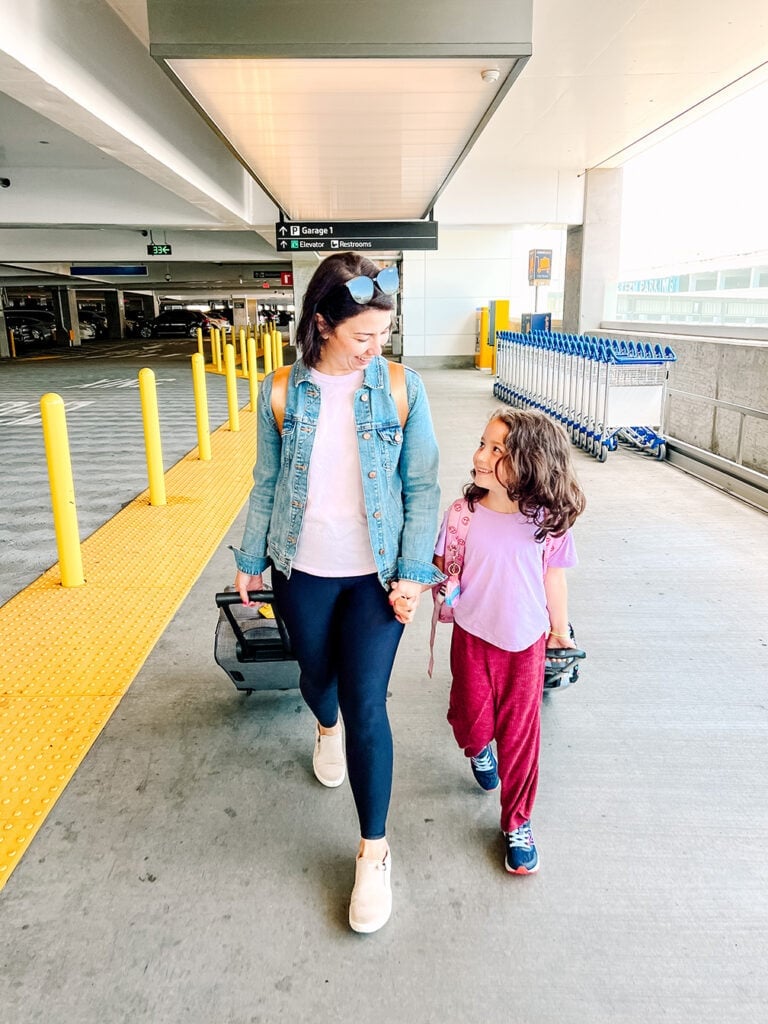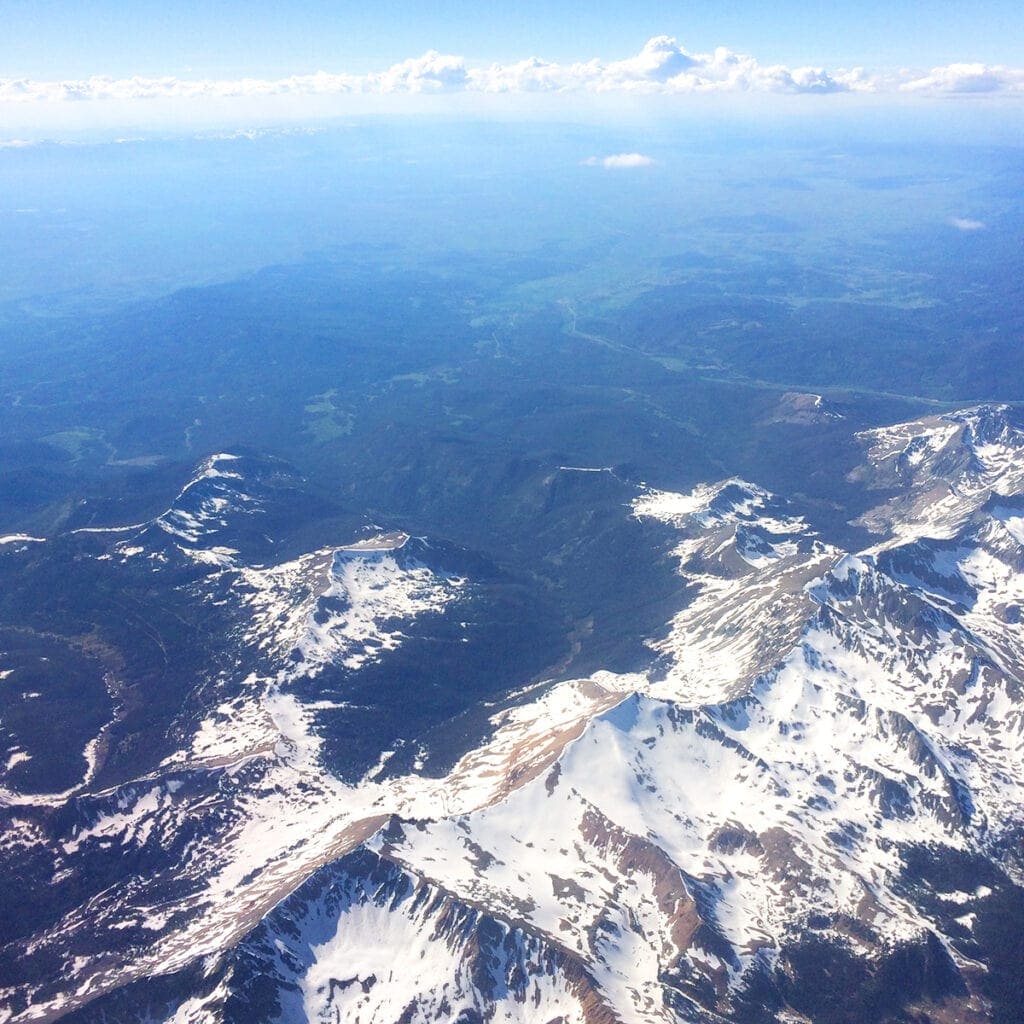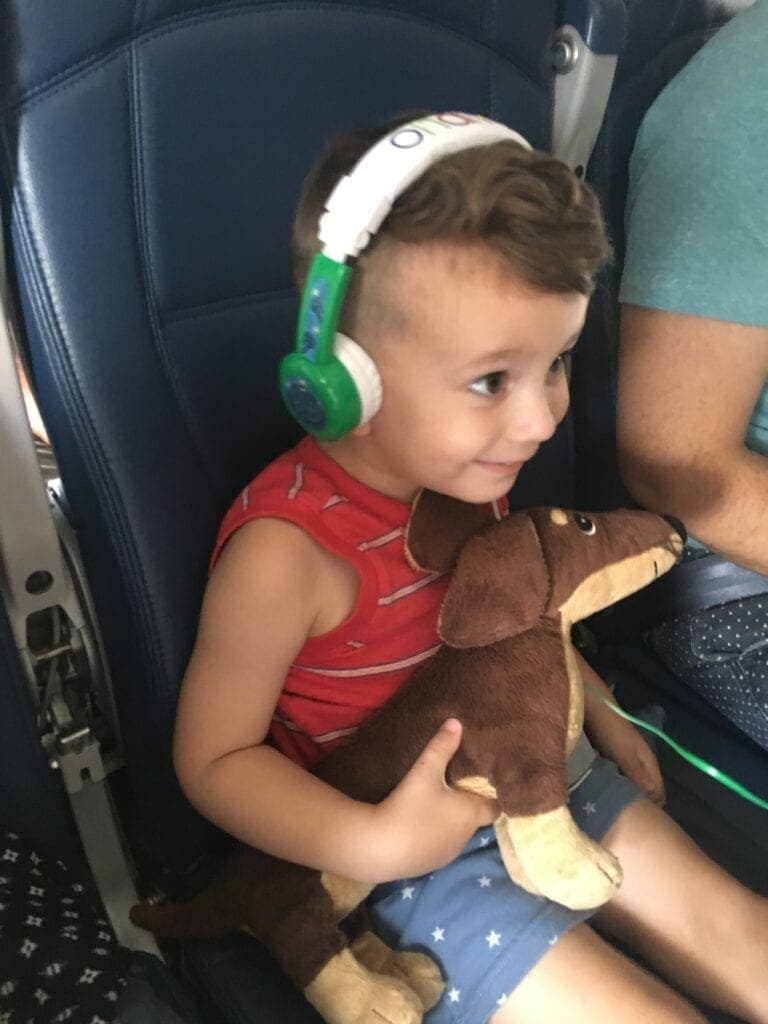Dealing with Fear of Flying
Having a fear of flying is no reason to stay grounded! Try my favorite tricks on your next flight and experience some relief!

I love travel, and always have. And up until a few years ago, I had no problem with flying whatsoever!
It was only after a particularly stormy, bumpy, turbulent ride in a small propeller plane (complete with jolts so heavy I grabbed my neighbors’ hands and started praying, for reals), that I developed a serious fear of flying.
And now, with every trip, I find myself busy dealing with a fear of flying. I guess, more specifically, it’s a fear of turbulence. Let me explain.
Psst — before we get into my techniques, be sure to enter your info below to join my VIP group. I send these folks more of my very best travel and family ideas!

What Causes a Fear of Flying?
I’ve done a lot of reading and I see over and over again that fear of flying or turbulence often comes from a perceived lack of control.
I, as a passenger, have zero control over what happens to the plane, the way it’s flown, the weather we fly through, and on and on. And I find that to be partially true.
But for me, there’s another layer to it — it’s the lack of knowledge. I’ve found that when we’re going through some bumpy air and the pilot comes over the intercom to explain what’s going on, I can maintain my cool much more easily.
If there’s a simple, “Folks, we’re going through some bumpy air trying to navigate through this storm, but we’re trying to find some smooth air and it should be better in 10 minutes,” I’m pretty good. Uncomfortable, but… hopeful?
But if there’s radio silence from the cockpit during substantial turbulence, I spiral. My mind immediately imagines that the turbulence is so bad the pilot can’t take his hands off the controls and we’re definitely going to die any minute.

Things to Try for Managing Fear of Flying
I also know logically that flying is one of the safest methods of transportation, and you’re way more likely to be injured in a car crash than in a plane crash.
They always say the most dangerous part of flying is the drive to the airport. But when that turbulence kicks in, that logic doesn’t stop my heart from racing or my eyes from filling with tears or my breath from getting short.
So over the years, I’ve developed a couple of (possibly weird) tricks that I do in the air when it’s bumpy and I just can’t calm my brain. Here’s how I work on overcoming fear of flying.

Sit By the Window
Some people tell me it seems counterintuitive, but I always feel better if I can see the ground.
As soon as turbulence starts I always find myself looking out the window. Partially because if the ground isn’t rushing up to meet us I know we’re okay so far!
I also find that if I can see clouds nearby outside, the bumps make sense. My mind wants to equate the smoothness of the flight with the status of the weather, I guess.
Once we start getting closer to the ground for landing, it’s also comforting to see landmarks getting bigger. Instead of just seeing mountains or bodies of water, soon you’ll see cities. And then roads. And then cars. And then you land.
Counting
It might be bordering on OCD, but my number one go-to for getting through a bumpy patch is counting.
Once the bumps start, I look out the window and breathe as calmly as I can, while I count seconds. I try to get to 100. Then 200. Then 300.
Most of the time, the bumps end before I get to 300 (five minutes) and I stop counting without even realizing it. If I get to 300 and it’s still turbulent I start over and redouble my efforts at slow, relaxed breathing.
This actually started on a bumpy flight back from Japan. The pilot told us to expect turbulence for 15 minutes, so I counted to 300 three times, and sure enough — the turbulence ended right on cue.
I always take comfort in that.

Find a Mantra
This is sort of along the same lines, but if counting doesn’t work for you, maybe a repeated phrase will. Sometimes I say, “It’s just like a bumpy road,” over and over again in my head, to a solid rhythm.
It helps to have something to focus on and even zone out with while you’re riding out the bumps.
Valsalva Maneuver
This one is a newer tool in my arsenal, and was actually taught to me by a therapist.
The Valsalva Maneuver is a trick that can slow down your heart rate. It’s actually a vagal maneuver that acts on the vagal nerve to help regulate blood pressure. Here’s a great overview.
Basically, you plug your nose and close your mouth, and then try to blow against it and bear down (like when you try to pop your ears). If you hold this for 10-15 seconds and then release, the effect on your body brings down heart rate. I also find that it has a calming effect to just know this tool in general.
Always ask your doctor before employing vagal maneuvers, especially if you have a history of heart issues.
Muscle Flexion and Release
This is another technique taught to me by a therapist! And it actually works well in lots of stressful situations.
Working from the bottom of your body to the top, one at a time, squeeze and hold a muscle group.
So working from your feet, flex all the muscles in your feet for a five count and then release. Then do ankles. Then calves, followed by quads, and so on, until you reach your facial muscles.
This process helps to release muscle tension to relieve anxiety, and gives your mind something to focus on.
Travel Anyway
None of this is to say that I am curing a fear of flying. But the goal is overcoming fear of flying so that I can go through the fear and travel anyway.
Because I’ll be danged if this gets the better of me — I have too much world to see!
Are you working on overcoming fear of flying? Do you have any go-to tricks? Leave them in the comments — I’d love to know what works for you. Happy travels! xoxo

